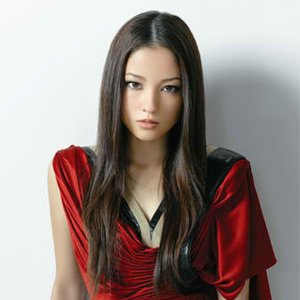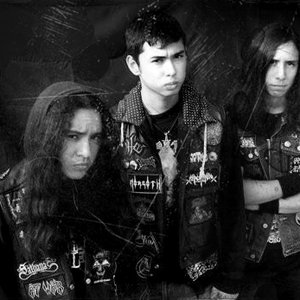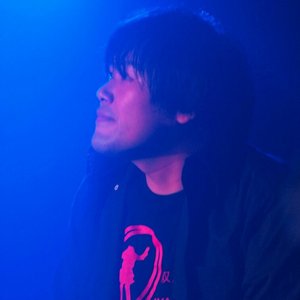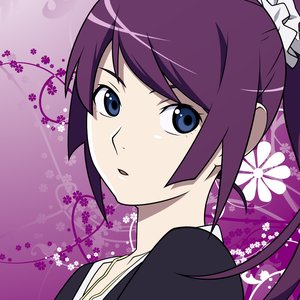Biography
In Durarara!!’s soundtrack, we have Yoshimori Makoto’s best work yet as he raises his game to a new level. The scary part of it is that I don’t think he’s reached his peak form yet, and so, given this steady rate of improvement, believe that his best soundtrack is yet to come. In the meantime, Durarara!!’s soundtrack is a very engaging experience, with its diverse blend of industrial, jazz, orchestral, and of course, folk music to make it a must-listen.
Rating: Very Good
Note: Though it doesn’t affect the quality of this album in any way, I’ll say this: I really really hate it when the soundtrack is bundled with the Japanese DVDs/Blu-Ray discs. This effectively means that I’m priced out of it, since paying $60+ for a bundled product when all I really want is just the soundtrack. Suffice to say, this practice is ridiculous (if understandable), and so, though I do have the affiliate links on here, I cannot, in good conscience, tell you to take the plunge.
As underrated as Yoshimori Makoto is, he can’t seem to not compose good music when he puts his mind to it. Though I did not think highly of Baccano! soundtrack, he’s has shown improvement, most noticeably in his Natsume Yuujinchou soundtrack, followed by a solid effort in the soundtrack for Natsume Yuujinchou’s second season.
With Durarara!!’s soundtrack, Yoshimori Makoto gives us his best soundtrack yet. Gone are the indistinct, melodies that plagued his Baccano! score as Makoto’s compositions have matured and he’s become more comfortable with jazz to put forth a solid effort that captures the essence of the anime. From the very start, “Ikebukuro nishiguchi go mata-ro kosaten’s” cacophony of instruments creates multiple layers that are weaved together into a jazzy fabric with a Middle Eastern touch that depicts the plots taking place in the show’s setting of Tokyo’s Ikebukuro district. This distinct sound works to sculpt the show’s atmosphere and as you continue going through the soundtrack, you’ll find that cacophony, along with dissonance, is the order of the day. - Ikebukuro nishiguchi go mata-ro kosaten
And it works! Jazz sets the right tone for a show highlighting subterfuge and a not-insignificant amount of thuggery in an urban environment. “Waraeru hodo hikyo na yatsu” offers a mix of industrial and jazz which proceeds in a manner that evokes an image of one of the show’s shadier characters prowling about town at night. The feeling of the cityscape in a state of decay is what comes to mind while listening, and the random snippets of conversation sound like people engaging in underhanded dealings as well as swapping rumors about the oddball occurrences. What really clinches it though is the random laughter that surprises you during the middle of the track, which immediately takes you out of your comfort zone and into the unpredictable, menacing underworld. - Waraeru hodo hikyo na yatsu
In addition to the atmospheric instrumentals, the shrill chuckle in “Waraeru hodo hikyo na yatsu” highlights a characteristic of Makoto’s compositions: random sound effects. Though it’s had mixed results in the past, this time, all of the tracks that employ this technique are bearable. “Koe no nai sakebi” is a good example of this in that the wailing that resounds through the track keeps you on edge, but does a good job depicting a multitude of scenarios without being overly grating. For example, it could be the wind whistling through the deserted alleyways of Ikebukuro or some vengeful spirit crying out over something it’s lost and is desperately trying to discover (totally talking about Celty here). If you don’t find the chilling, discordant sound to be your thing, that’s about as bad as the Yoshimori Makoto-isms get in this album; you’re not going to find any annoying mosquito noises. Not in this Makoto soundtrack anyhow.
- Koe no nai sakebi
But what I’ve always enjoyed from Yoshimori Makoto’s music is the way he composes beautiful piano and violin melodies. We get a taste of that early on through “Akogare no hi nichijo’s” piano and recorder which convey the emotion of first love at first sight. The melody blooms wonderfully, signifying just how much the love has strengthened while incorporating the usual tentativeness and awkwardness associated with that love. Better still is “E no naka no shojo” which consists of a violin and piano duet where the piano sets up a lovely rhythm and cascades down a poignant air, filled with yearning feelings from the violin. The depths of emotions into which it brings forth fills me with awe, making it one of the strongest memorable pieces on the album. - Akogare no hi nichijo
Even with something as beautiful as “E no naka no shojo” in tow, nothing can really beat out “Midoriiro no kioku” which demonstrates Yoshimori Makoto’s talent with Irish melodies! From the start, the fiddle demands your attention as it takes you far away from the hustle and bustle of modern life and into the lush, rustic landscape of Ireland. Once the tin whistle enters, I can’t help but feel relaxed as I look upon the sights and sounds of the pastoral Emerald Isle and take in that magnificent sight. The way this piece lilts, ebbs, and flows creates a joyous, upbeat mood that assures you all is well. Endings don’t get much better than that, and in the realm of happy endings, this one’s fantastic! - Midoriiro no kioku
Artist descriptions on Last.fm are editable by everyone. Feel free to contribute!
All user-contributed text on this page is available under the Creative Commons Attribution-ShareAlike License; additional terms may apply.










